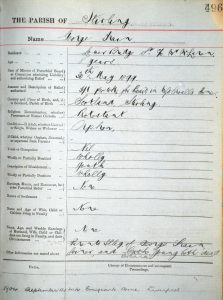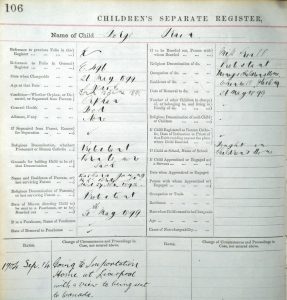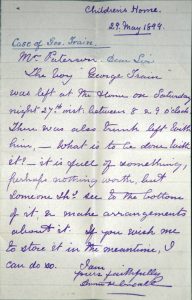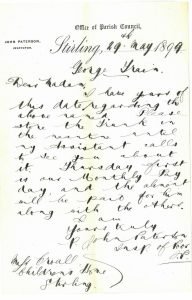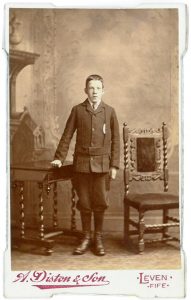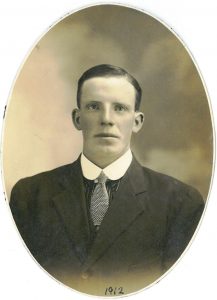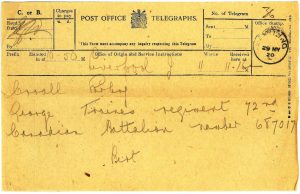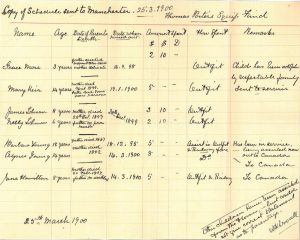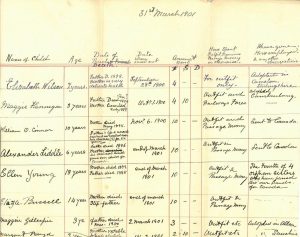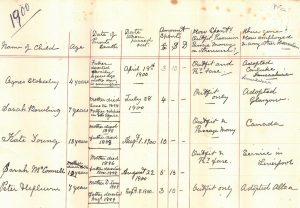Records held at the Archives give a very detailed picture of the life of George Traine and added detail has been given to us from her own research by one of our volunteers.
George appears in the Stirling Parish register of the poor and the children’s separate register, recorded as being accepted on to the poor roll on 26th May 1899.
He is given in the Stirling Parish register of the poor as being the illegitimate son of George Traine, joiner, and Barbara Young ‘both dead’. Research in the Stirling census returns by our volunteer reveal that in 1891 Barbara Young, widow of Henry Young, Cabinet Maker, was living at 57 Cowane Street, Stirling along with her 4 daughters and a boarder, one George Traine, 52, a Cabinet Maker. It would appear that George junior, born on 12th June 1891, according to the registrations of birth for Stirling, was the result of this association.
Sadly, Barbara Young died on 22nd November 1892 of tuberculosis. It would appear that George provided for his son after this because George junior does not appear on the poor roll until well after his father’s death on 26th May 1896.
The children’s separate register records that George was transferred to the care of Miss Croall, who is described as managing a children’s home at Whinwell, Stirling. The Whinwell Children’s Home and Miss Annie Croall who founded and managed it were very well known in Stirling. The records of the Home are also held at the Archives and there is a file amongst them for George Traine.
In George’s file there are the letters written between Miss Croall and the Inspector of the Poor for Stirling about George and the transfer of him and his trunk to the Home as well as a confirmation of his birth date.
A formal photograph was taken of George in his best suit and this is in his file.
In 1904, it was decided to send George to Canada and the papers giving details of the organisation of this are also in George’s file. Many Scottish children in care were sent to Canada at this time as it was thought that they would have more opportunities in the New World.
The records of the Whinwell Home include a lot of letters that former inmates sent to Miss Croall after they left to give her their news. It would seem from this that she was much loved by the children in her care. George was no exception and sent her a picture of himself once he had settled and become established in Canada.
Further research undertaken by Sandra Muir, who volunteers at the Archives, reveals that George became a Teamster in Canada and then joined the 102nd Regiment of Rocky Mountain Rangers. Then on 20th December 1915, at the age of 24, George joined the Seaforth Highlanders of Canada, Vancouver and soon found himself on his way back to Europe to fight in the First World War. His army records survive and show that he died of wounds at Passchendaele on the 30th October 1917 and was buried at the Nine Elms British Cemetery there.
Miss Croall must have heard of his death as there is a telegram in his file dating from 1920 giving a response to an enquiry that she must have sent asking about his regiment, that gives details of this and of his service number. It is likely that George was mourned and remembered in Stirling after his death.
Records relating to George’s half-sisters, Barbara, Agnes, Ellen and Kate, are also held as part of the Whinwell Home collection. Unfortunately, they do not have individual files but there are records of them being given funding for clothes and their passage to Canada. Perhaps they were able to keep in touch with their half-brother once they were there.
